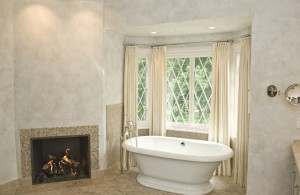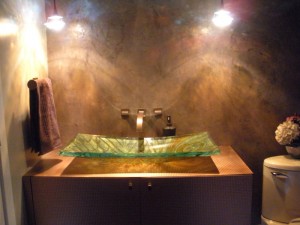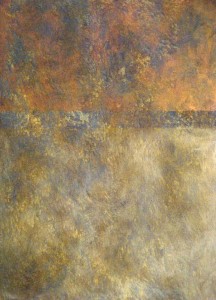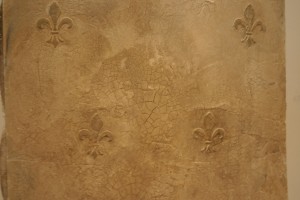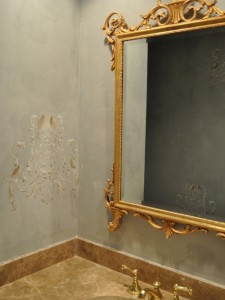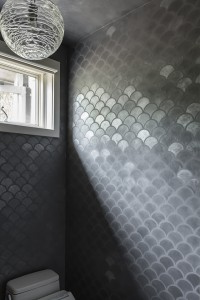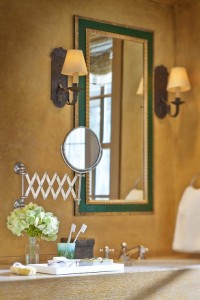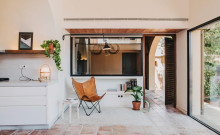Venetian plaster is one of the greenest wall treatment option suitable for bathrooms, kitchen and areas prone to getting wet on a daily basis. It uses versatile and durable materials such as lime, cement, and sand which prevents moisture from accumulating inside the wall finish. It can tolerate rising damp and allows water that is absorbed into the plaster to quickly evaporate.
Contrary to the idea that it is an actual product, Venetian plaster is actually a technique that is used to create an illusion of texture and depth in designing walls. Its versatile nature gives you more flexible options when it comes to interior home painting design. Here we have compiled 4 design ideas you can use to design your bathroom with Venetian plaster.
Sponged Finish With Design
For a sponged finish with design, you need to apply the Venetian plaster first and wait until it gets dry. After it has dried, paint it with a solid base coat of acrylic paint. Next, choose another paint color close to the base color and double coat the wall surface. Once that has dried, use a stencil and apply the designs using a sponge. Have fun!
Color Washing
Color washing is a subtle design which creates a vintage or antiqued look to your bathroom walls. Warm colors such as yellows, oranges and browns are best used for this technique. To start with, paint the wall with a solid color base and allow it to dry. After which, brush a thin top coat of paint making sweeping long strokes on the surface.
Ragging and Stencils
Ragging and Stenciling is a fast and simple technique that is used to create a grand look to any wall surface. To do this, mix the paint is with glaze and then wipe it off with rags. You can also apply the glaze with the rag, or paint solid patterns over the finish in order to add depth.
Fabric Texture
The Fabric Texture design is closely similar to Ragging and Stencils technique but it differs slightly on the method of application. After the base coat is dry, you then apply the glaze by rolling a rag or any type of fabric tight and run it down the wet glaze.


